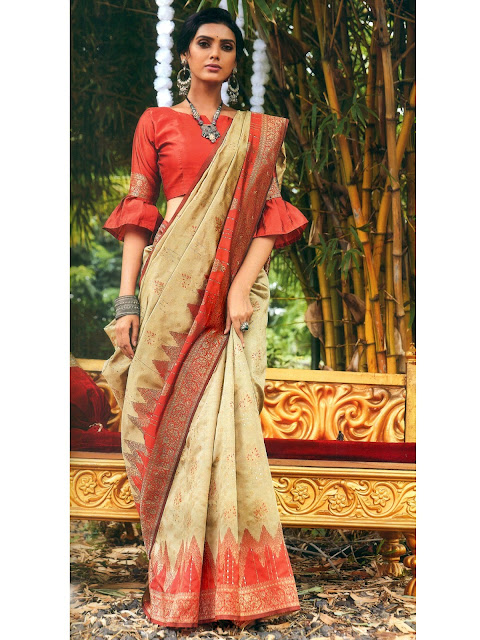Discover the Elegance of Banarasi Sarees: A Timeless Indian Tradition
Banarasi sarees, also known as Benarasi sarees, are a traditional Indian garment that have been worn by women for centuries. These sarees are known for their intricate designs and luxurious fabrics, making them a popular choice for special occasions such as weddings and festivals.
The sarees are made in the city of Varanasi, also known as Benaras, in the northern state of Uttar Pradesh, India. The city is famous for its silk and brocade fabrics, which are used to create the sarees. The sarees are made using a combination of silk and gold or silver thread, known as zari, which gives them their characteristic sheen and luster.
Pure Katan Minadaar Jamawar Banarasi Saree With On All-Over Phool Bail
The designs on Banarasi sarees are inspired by nature and traditional Indian motifs such as the lotus flower, paisleys and intricate geometric patterns. The sarees are also known for their delicate zari work, which is done by skilled artisans using a technique known as kadhua.
The sarees come in a variety of colors, patterns and styles, making them suitable for women of all ages and tastes. Some of the most popular styles include the Tanchoi, the Jangla and the Cutwork. The Tanchoi is known for its fine silk and intricate designs, while the Jangla is characterized by its bold and colorful patterns. The Cutwork is a more modern style that features cut-out designs and is often paired with a plain silk blouse.
Banarasi sarees are a great choice for special occasions such as weddings and festivals, and are also popular as gifts for new brides. They are a timeless Indian tradition that is sure to be cherished for years to come.
In conclusion, Banarasi sarees are a traditional Indian garment known for their intricate designs and luxurious fabrics. These sarees are made in Varanasi using silk and gold or silver thread, known as zari. The designs on Banarasi sarees are inspired by nature and traditional Indian motifs, and are available in a variety of colors, patterns and styles.

Comments
Post a Comment